#The Tomb of a Royal Scribe Discovered in Egypt
Explore tagged Tumblr posts
Text
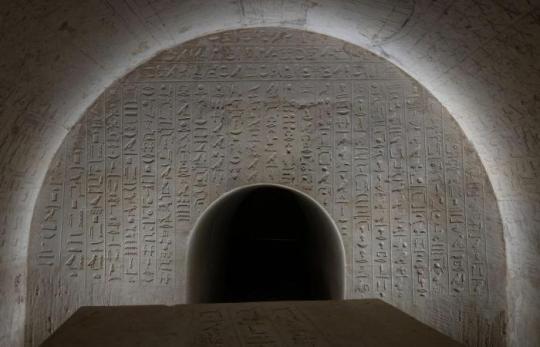
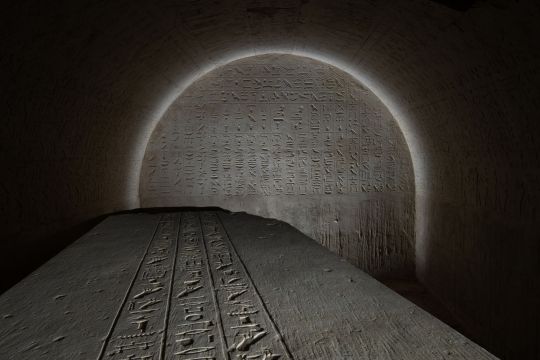
The Tomb of a Royal Scribe Discovered in Egypt
Czech experts have made another important discovery in the Egyptian archaeological site in Abusir. They found the hitherto unexplored tomb of the royal scribe Dzhehutiemhat, which is richly decorated in the form of many hieroglyphic texts and images. They mainly consist of ritual and religious texts, which were supposed to ensure the soul of the deceased an eternal life in the next world.
In April and May of this year, another part of field research by Czech Egyptologists regarding shaft tombs from the middle of the first millennium BC took place in Abusir, Egypt. It was here that the archaeological team of the Czech Institute of Egyptology of the Faculty of Arts of Charles University discovered the tomb of a hitherto unknown dignitary from the time of the Persian invasion of Egypt.

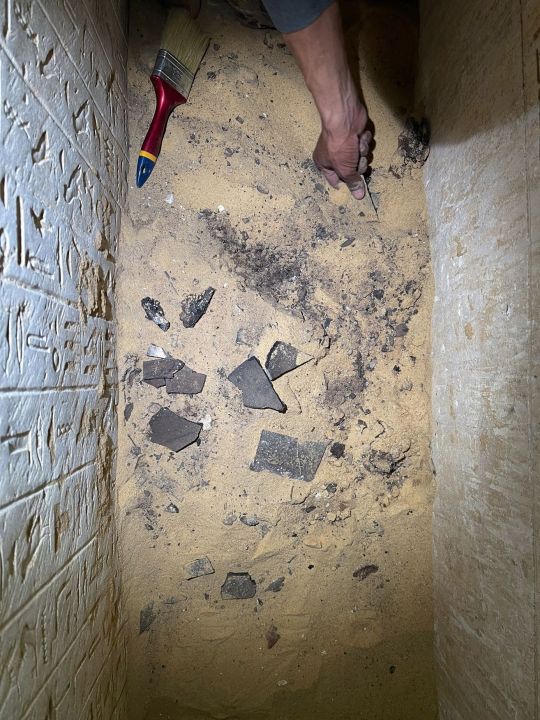
“It is a richly decorated shaft tomb of medium size, whose owner, a certain Džehutiemhat, held the office of royal scribe,” explains Ladislav Bareš, who has been coordinating the research of Abusir shaft tombs for a long time.
From the tomb, the above-ground part of which was destroyed already in ancient times, only the main shaft was preserved, at the bottom of which lay a burial chamber made of limestone blocks at a depth of 14 meters. Access to it was provided by a small, more northerly shaft and a narrow corridor approximately three meters long connecting the access shaft with the burial chamber.
For reasons still unknown, this access shaft was largely filled with several dozen decorated limestone blocks, originating from the dismantled above-ground part of the nearby majestic tomb of General Menechibnekon.
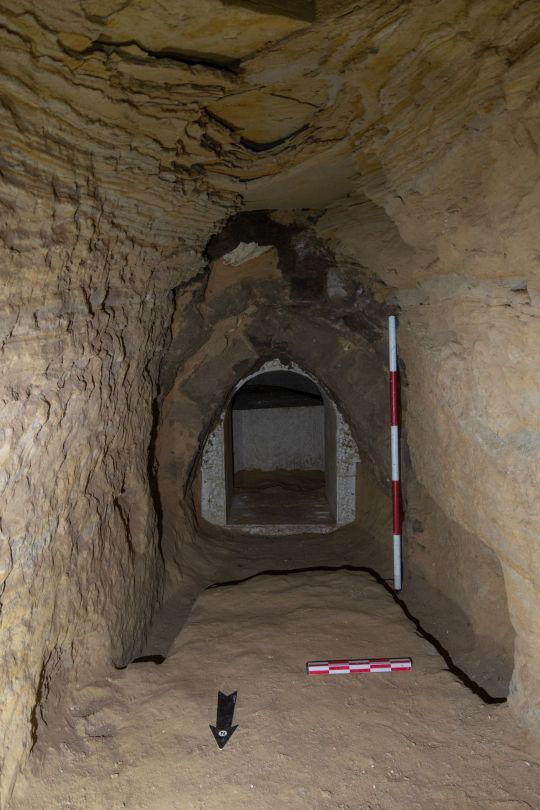
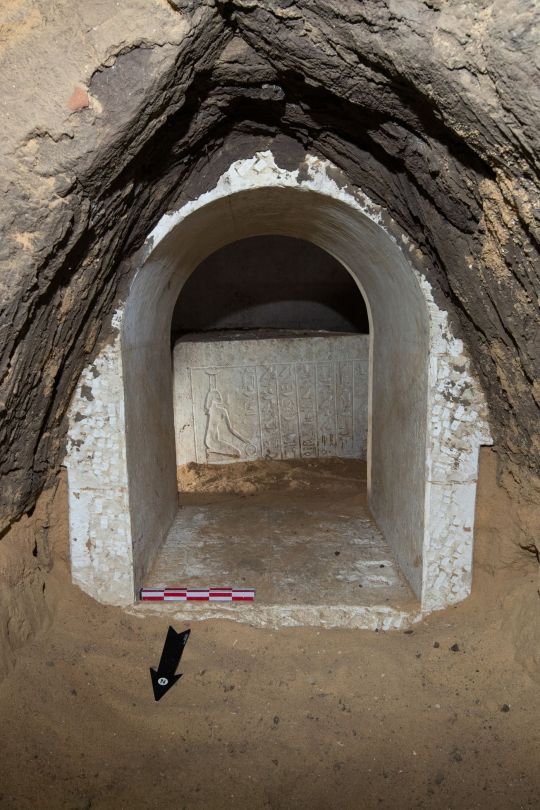
A tomb with rich decoration
The burial chamber is richly decorated with texts and other scenes. A long sequence of incantations against snakebite from the Pyramid Texts covers the north entrance wall. Interestingly, the snakes mentioned in these magical texts represented a potential danger, but could also serve as powerful protectors of the deceased and his mummy.
“While the entrance to the nearby Menechibnekon’s burial chamber was protected by the guardians of the gates of the 144th chapter of the Book of the Dead, in the case of Džehutiemhat, snakes from the Pyramid Texts play this role,” adds Renata Landgráfová, director of the Institute of Egyptology and an expert on the ancient Egyptian language and texts.
The south and west walls are covered with a sacrificial ritual and an extensive sacrificial list. On the ceiling of the burial chamber are depictions of the journey of the sun god Reo through the sky, first in the morning and then in the evening celestial bar. The depictions are accompanied by hymns to the rising and setting sun. Inside the burial chamber covered with relief decoration is a large stone sarcophagus, which also bears hieroglyphic inscriptions and depictions of gods, both outside and inside. The lid is decorated with texts taken from the Book of the Dead, but also excerpts from the much older Pyramid Texts, which partially repeat sayings that also appear on the walls of the burial chamber.
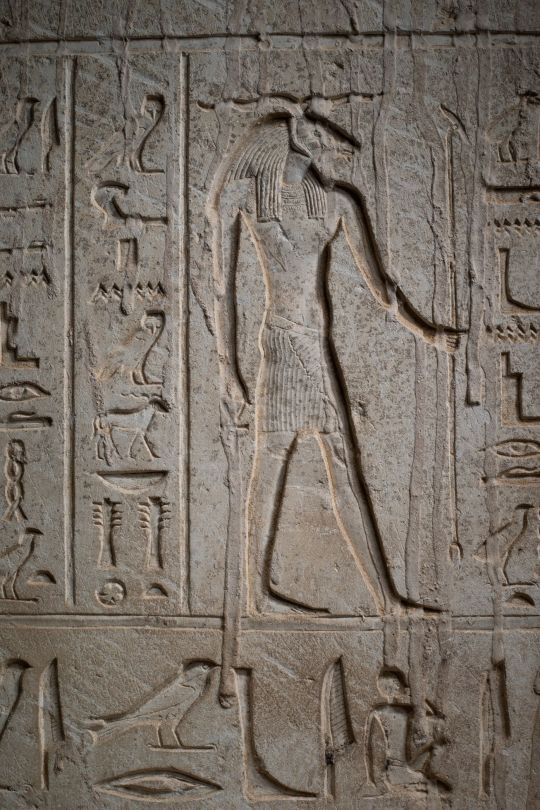

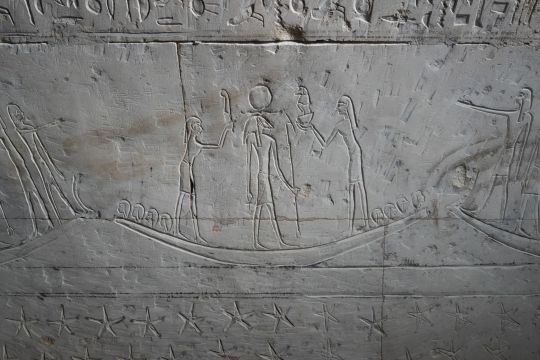
Ritual texts for eternal life
On the bottom of the inner wall of the sarcophagus bath, the goddess of the west, Imentet, is depicted, and its inner sides bear the so-called canopic sayings, spoken by this goddess and the earth god Geb. “The goddess of the west inside the sarcophagus represents the protector, guide and symbolic mother of the deceased,” explains Jiří Janák, who analyzes and interprets religious and magical texts as part of field research.
All the mentioned spiritual-ritual texts were supposed to ensure the deceased a smooth entry into a blissful and well-secured eternal life in the afterlife.
The tomb of the scribe Dzhehutiemhat was discovered almost empty, as it was robbed probably already in the 5th century AD, similar to other tombs in this burial ground.
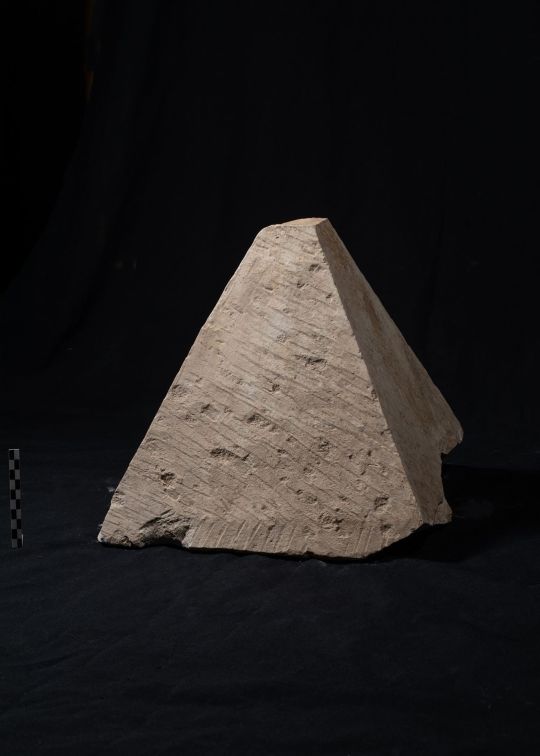
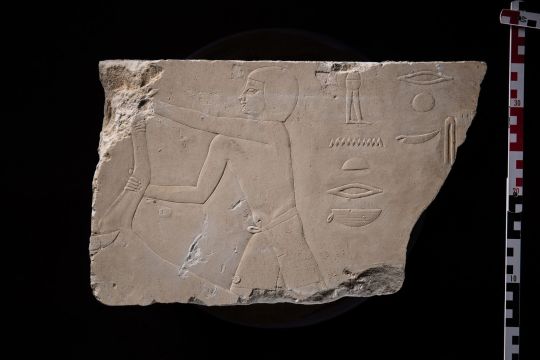

The deceased suffered from sedentary work
From the anthropological analysis of the skeletal remains, which was carried out by leading Egyptian experts, it was found that Dzhehutiemhat died at a relatively early age of around 25 years, he bore the signs of a kind of occupational disease (wear and tear of the spine during sedentary work) and suffered from severe osteoporosis, i.e. thinning of the bones.
The latter fact could place him in the family of other inhabitants of the Abusir shaft tomb burial, in whom the disease was also confirmed, such as the famous Iufaa, the owner of a nearby much larger tomb, whose unlooted burial chamber was discovered in 1996.
It is therefore possible that most of the owners of the tombs buried in this part of the Abusir necropolis belonged to one extended family, firmly anchored in the military elite of late Saiyan Egypt. However, Dzhehutiemhat’s mother probably came from completely different circles and a different part of Egypt at that time. Her two names can be translated as “Nubian” and “Fox”, while the latter is written in an unusual, most likely Berber form.
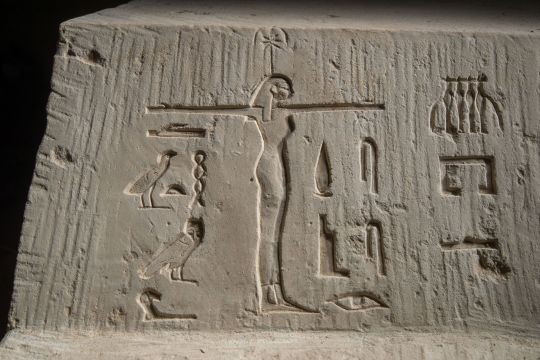
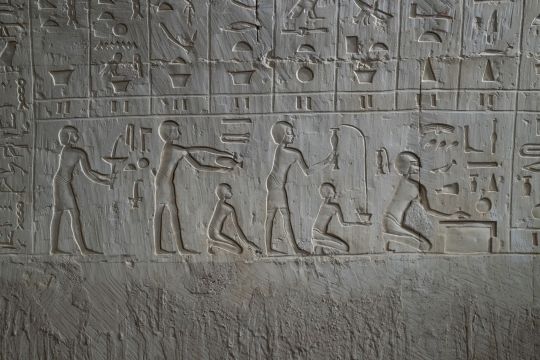
They also found a collection of pottery in the tomb. “The discovery of a large fragment of a Chian amphora with a perfectly smoothed edge is also very interesting, because the ancient looters probably used it as a shovel,” says Květa Smoláriková, who is an expert on Egyptian ceramics and Greek imports in the Czech team.
“The recently discovered tomb of the dignitary Džehutiemhat on the Abusír archaeological concession is the latest piece of knowledge in the mosaic of the history of ancient Egypt at the end of its glory in the late period, in the 6th century BC,” says Miroslav Bárta, director of Czech archaeological research in Abusír, about the discovery.
“The shaft tombs represent a special type of tombs of this time. They were created as a specific attempt by the ancient Egyptian elites for a renaissance and are based on the form of the tomb of King Djoser, the founder of the famous Old Kingdom, the time of the pyramid builders in the 3rd millennium BC,” he adds.
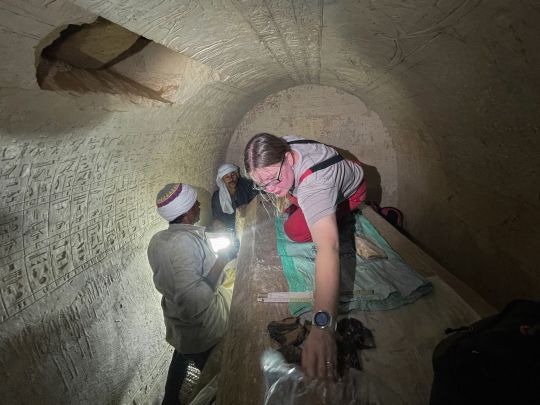
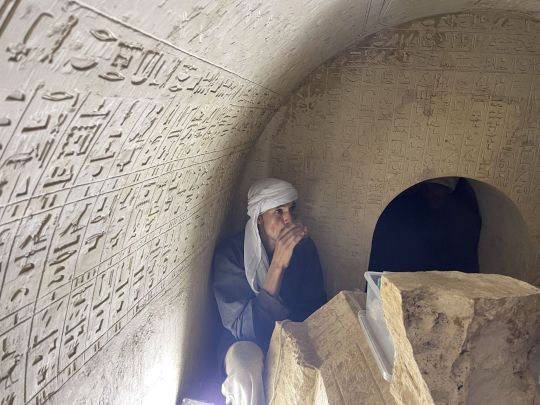
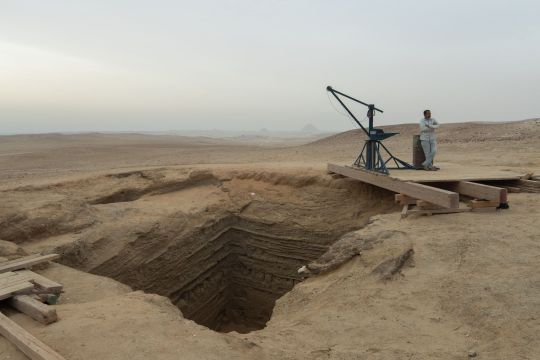
#The Tomb of a Royal Scribe Discovered in Egypt#Abusir Egypt#Dzhehutiemhat#first millennium BC#ancient tomb#ancient grave#ancient artifacts#burial chamber#Czech Institute of Egyptology#archeology#archeolgst#history#history news#ancient history#ancient culture#ancient civilizations#ancient egypt#egyptian history#egyptian art#long reads
429 notes
·
View notes
Text
Discovery of the tomb of Prince Userefre, son of King Userkaf
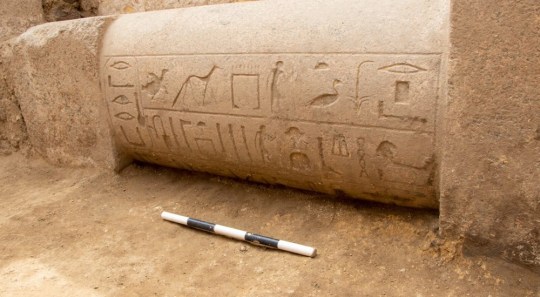
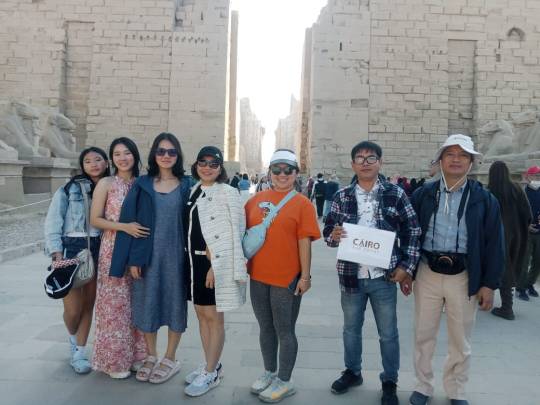
A joint Egyptian archaeological mission, led by the Supreme Council of Antiquities and the Dr. Zahi Hawass Foundation for Antiquities and Heritage, has uncovered the tomb of Prince Woseribre, the son of King Userkaf, the first ruler of Egypt’s Fifth Dynasty. This significant discovery was made in the ancient necropolis of Saqqara, alongside other crucial finds from both the Old Kingdom and the Late Period.
According to Dr. Mohamed Ismail Khaled, Secretary-General of the Supreme Council of Antiquities, this marks the first time such a massive pink granite false door has ever been found. It stands 4.5 meters tall and 1.15 meters wide, and is engraved with hieroglyphs denoting the prince's titles, such as “Hereditary Prince,” “Governor of Buto and Nekheb,” “Royal Scribe,” “Vizier,” “Judge,” and “Chanting Priest.”
Archaeologist and former Minister of Antiquities Dr. Zahi Hawass added that, remarkably, the team discovered for the first time statues of King Djoser, his wife, and their ten daughters inside the tomb. Preliminary research indicates that these statues were originally located in a chamber near the Step Pyramid of Djoser, but were relocated to Prince Woseribre’s tomb during the Late Period. The mission will continue investigating the reasons behind this unusual relocation.
In addition, the team unearthed a red granite offering table with a diameter of 92.5 cm, inscribed with texts listing sacrificial offerings. Inside one of the chambers, they found a colossal 1.17-meter-tall statue carved from black granite, depicting a standing man with hieroglyphs on his chest identifying him and his titles. It is believed that this statue dates back to the 26th Dynasty, suggesting the tomb may have been reused during the Late Period.
Near the eastern façade of the tomb, the team discovered another entrance framed in pink granite. It bore the name and titles of the tomb’s owner along with a cartouche of King Neferirkare. To the north of this lintel, a truly unique find in Saqqara was revealed—a collection of 13 seated statues, all carved from pink granite, each placed on a high-backed chair.
Some of the statues were of women, likely representing the prince's wives. Notably, two headless statues were found beside a 1.35-meter black granite statue that had been overturned face down.
Such monumental discoveries continue to attract history lovers and travelers worldwide. Whether you're planning Egypt Tours or are looking for a tailored Egypt Tours Package, Saqqara is an essential destination. If you're short on time, there are Egypt Day Tours available to explore nearby marvels. For those based in Cairo, Egypt Day Tours from Cairo offer convenient and immersive experiences.
Travellers interested in historical depth may enjoy Egypt Classic Tours, while seasonal visitors can opt for Egypt Easter Tours. Additionally, cruise passengers can use Egypt Shore Excursions to witness Saqqara’s wonders firsthand.
1 note
·
View note
Text
Hello Egypt!
September 19, 2024
Today is our first full day in Egypt. Egypt is 4 times bigger than Michigan and has 108 million people as compared to Michigan’s 9 million. More land and a LOT more people. Cairo is the capital and has 23 million people more than twice the whole population of Michigan
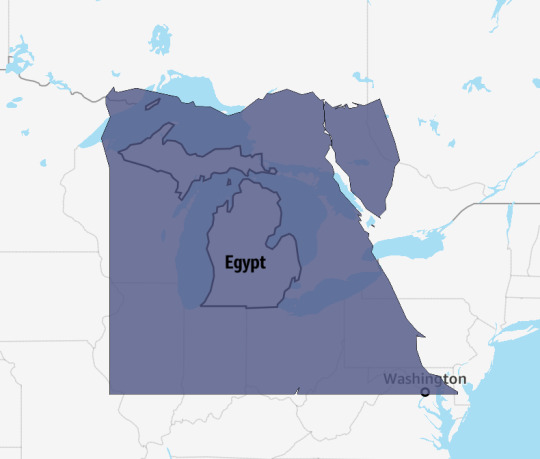
This morning we headed out to the Egyptian Museum built in 1902.
The Egyptian Museum in Cairo (EMC) is the oldest archaeological museum in the Middle East, housing over 170,000 artifacts. It has the largest collection of Pharaonic antiquities in the world.

Now we have been to the British Museum, The Field Museum in Chicago, The Detroit Institute of Arts, and The Boston Museum of Fine Arts (to name a few) and frankly I was surprised to see anything.
Our fine guide Ayman (pronounced Eye-man) took us on a little guided tour before he turned us loose. This in an old school museum and much of the artifacts are heading to the new and HUGE new Grand Egyptian Museum which is still not 100% open but maybe in a year or two. We will see the building tomorrow when we visit the Giza Pyramids and the Sphinx. OMG! I can’t wait.
But back to the prep. There are still some amazing artifacts left in this old museum including the treasures from King Tut’s tomb. But first…
Pharaoh Khufu: The builder of the Great Pyramid of Giza.

His only surviving statue is, ironically, the smallest piece of Egyptian royal sculpture ever discovered: a 7.5 cm (3 inch) high ivory statue found at Abydos. But there it is.
I particularly loved this sculpture of a scribe. Scribes were held in great regard - and when Ayman shown a light on his eyes the glass eyes became mesmerizing.
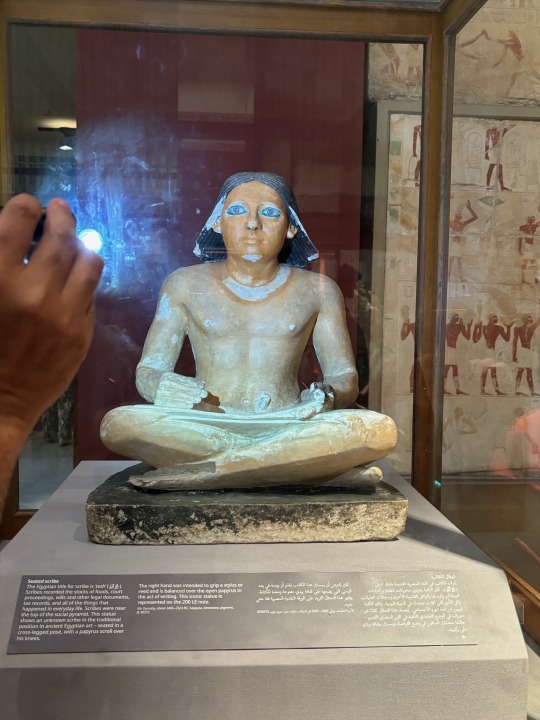
The ability to read and write was - and is - an amazing feat capable of changing lives.
Another story is that in 1974, the mummy of Ramesses II was in decline and need some expert help. Egypt appealed to specialists around the world and France stepped up. Ramesses II was being packed to be taken to France - when it was halted by paper work. NO ONE could visit France without a valid passport. CAN YOU BELIEVE THIS? Anyway - although this is not the best picture he had ever taken - the passport was indeed issued. He went to France and was stabilized. Below is the passport. Check out the birthdate.
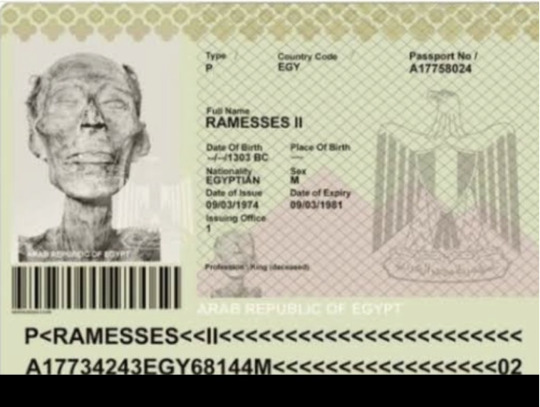
Amazing antiquities are at the place but who doesn’t love the King Tut stuff. Most of that cannot be photographed - so “hello” Internet. AWESOME!
But we did take these photos…
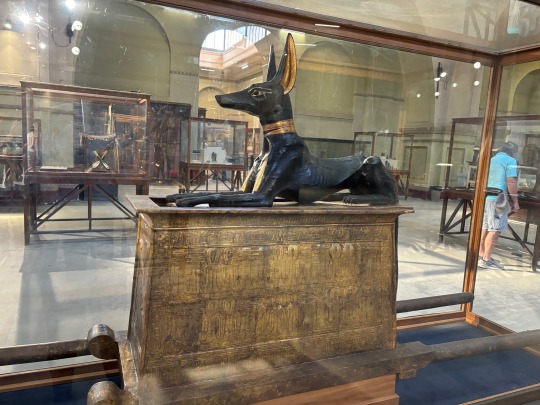


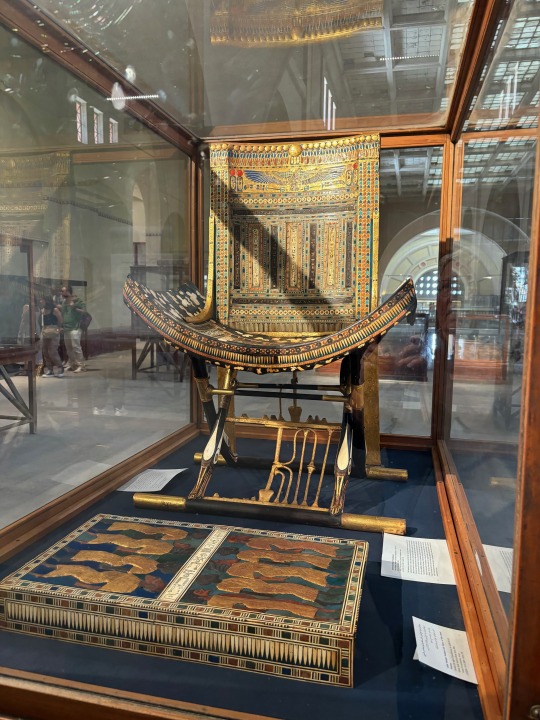
These photos are from the Internet - but we laid eyes on all of them.
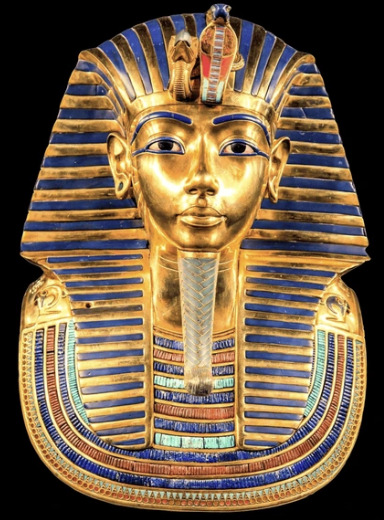
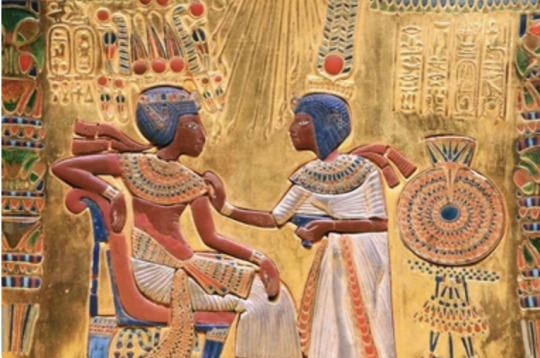
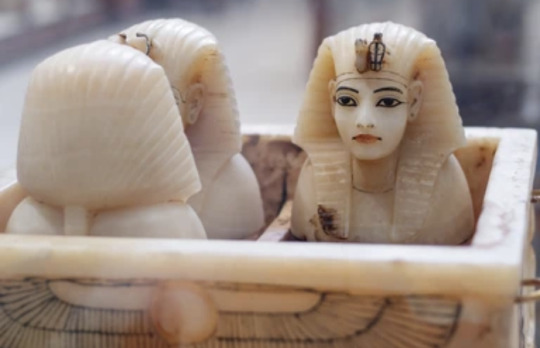
I truly enjoyed this Old School museum - and my proof that it is “OLD SCHOOL”


Read the last line. Cool - huh?
Tomorrow we will see some of the 111 pyramids of Egypt. That number is not a joke. 111.
Stay tuned.
1 note
·
View note
Text
May 16th: Drawing Day
Fantasy: Write a fantasy story about a character who discovers that anything they draw becomes real. Explore the consequences of their newfound power as they create both wonders and challenges.
Historical Fiction: Set your story during the Renaissance, focusing on a talented artist's journey as they create masterpieces for a demanding patron while navigating the politics and intrigue of the era.
Romantic Drama: Create a romantic drama where two artists, one a painter and the other a sculptor, fall in love despite their creative differences and engage in a passionate artistic collaboration.
Science Fiction: In a futuristic society, tell a story about a digital artist who becomes trapped within their own virtual creations, blurring the line between the digital world and reality.
Mystery: Craft a mystery novel where a detective stumbles upon a series of cryptic drawings that hold the key to solving a complex case, requiring them to decode the hidden messages within the art.
Children's Fiction: Write a children's adventure story about a young artist who enters the fantastical world of their own drawings, embarking on a quest to rescue their favorite character from a menacing villain.
Horror: Create a horror story where a sketchbook contains disturbing and malevolent drawings that come to life, terrorizing the artist who unknowingly brought them into existence.
Contemporary Drama: Craft a character-driven drama about an art therapist who helps a troubled teenager express their emotions and inner turmoil through drawing, leading to a transformative healing process.
Historical Fiction: Set your story in prehistoric times, following a cave artist as they create the world's first drawings on cave walls, capturing the essence of their ancient world.
Science Fiction Thriller: Write a science fiction thriller where a top-secret military project involves a machine that can turn drawings into advanced weaponry. A rogue artist gains control of this technology and threatens global security.
Historical Fiction: Set your story in the Edo period of Japan, portraying the life of an ukiyo-e woodblock print artist as they create iconic prints that reflect the cultural and social changes of the time.
Adventure: Craft an adventure story about a treasure hunter who deciphers a series of enigmatic drawings left by an explorer from the past, leading them on a perilous journey to uncover a hidden treasure.
Science Fiction Fantasy: In a futuristic world with advanced AI, tell a story about a sentient AI artist struggling to find its own creative identity while forming a connection with a human artist.
Historical Fiction: Set your story in ancient Egypt, where a scribe and illustrator creates intricate hieroglyphic drawings for royal tombs, preserving the pharaoh's legacy for eternity.
Romantic Comedy: Create a romantic comedy about two strangers who connect through a drawing exchange program, each sketching scenes from their lives and gradually falling in love through their shared artwork.
Journaling: Recall a significant moment in your life when you expressed your thoughts or emotions through drawing. Write about the experience, the emotions you conveyed, and the impact it had on you.
Journaling: Reflect on a time when you received a drawing or artwork from someone else. Describe the feelings and memories associated with that gift and its significance to you.
1 note
·
View note
Text
10 things you (probably) didn’t know about ancient Egypt
The Great Pyramid was not built by slaves The land of the pharaohs is famous for its huge pyramids, its bandaged mummies and its golden treasures. But how much do you really know about ancient Egypt? Here, Egyptologist Joyce Tyldesley shares 10 lesser-known facts

1.They did not ride camels
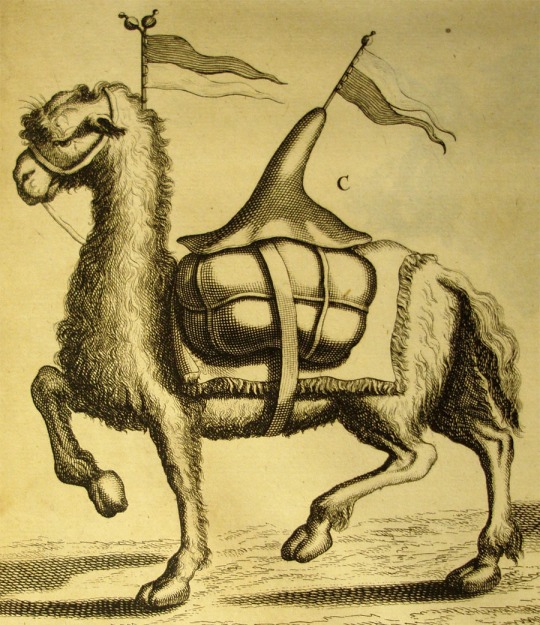
The camel was not used regularly in Egypt until the very end of the dynastic age. Instead, the Egyptians used donkeys as beasts of burden, and boats as a highly convenient means of transport.The River Nile flowed through the centre of their fertile land, creating a natural highway (and sewer!). The current helped those who needed to row from south to north, while the wind made life easy for those who wished to sail in the opposite direction. The river was linked to settlements, quarries and building sites by canals. Huge wooden barges were used to transport grain and heavy stone blocks; light papyrus boats ferried people about their daily business. And every day, high above the river, the sun god Ra was believed to sail across the sky in his solar boat.
2.Not everyone was mummified

The mummy – an eviscerated, dried and bandaged corpse – has become a defining Egyptian artefact. Yet mummification was an expensive and time-consuming process, reserved for the more wealthy members of society. The vast majority of Egypt’s dead were buried in simple pits in the desert.So why did the elite feel the need to mummify their dead? They believed that it was possible to live again after death, but only if the body retained a recognisable human form. Ironically, this could have been achieved quite easily by burying the dead in direct contact with the hot and sterile desert sand; a natural desiccation would then have occurred. But the elite wanted to be buried in coffins within tombs, and this meant that their corpses, no longer in direct contact with the sand, started to rot. The twin requirements of elaborate burial equipment plus a recognisable body led to the science of artificial mummification.
3.The living shared food with the dead
The tomb was designed as an eternal home for the mummified body and the ka spirit that lived beside it. An accessible tomb-chapel allowed families, well-wishers and priests to visit the deceased and leave the regular offerings that the ka required, while a hidden burial chamber protected the mummy from harm.Within the tomb-chapel, food and drink were offered on a regular basis. Having been spiritually consumed by the ka, they were then physically consumed by the living. During the ‘feast of the valley’, an annual festival of death and renewal, many families spent the night in the tomb-chapels of their ancestors. The hours of darkness were spent drinking and feasting by torchlight as the living celebrated their reunion with the dead.

4.Egyptian women had equal rights with men
In Egypt, men and women of equivalent social status were treated as equals in the eyes of the law. This meant that women could own, earn, buy, sell and inherit property. They could live unprotected by male guardians and, if widowed or divorced, could raise their own children. They could bring cases before, and be punished by, the law courts. And they were expected to deputise for an absent husband in matters of business.
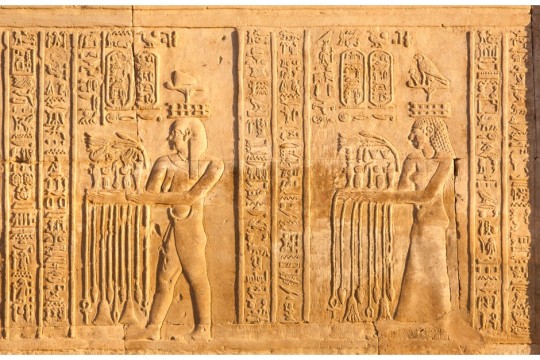
Everyone in ancient Egypt was expected to marry, with husbands and wives being allocated complementary but opposite roles within the marriage. The wife, the ‘mistress of the house’, was responsible for all internal, domestic matters. She raised the children and ran the household while her husband, the dominant partner in the marriage, played the external, wage-earning role.
5.Scribes rarely wrote in hieroglyphs
Hieroglyphic writing – a script consisting of many hundreds of intricate images – was beautiful to look at, but time-consuming to create. It was therefore reserved for the most important texts; the writings decorating tomb and temple walls, and texts recording royal achievements.As they went about their daily business, Egypt’s scribes routinely used hieratic – a simplified or shorthand form of hieroglyphic writing. Towards the end of the dynastic period they used demotic, an even more simplified version of hieratic. All three scripts were used to write the same ancient Egyptian language.Few of the ancients would have been able to read either hieroglyphs or hieratic: it is estimated that no more than 10 per cent (and perhaps considerably less) of the population was literate.
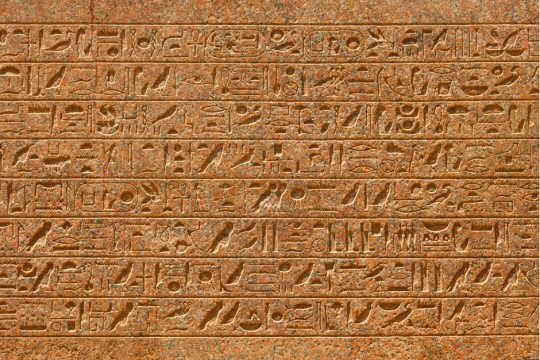
6.The king of Egypt could be a woman
Ideally the king of Egypt would be the son of the previous king. But this was not always possible, and the coronation ceremony had the power to convert the most unlikely candidate into an unassailable king.On at least three occasions women took the throne, ruling in their own right as female kings and using the full king’s titulary. The most successful of these female rulers, Hatshepsut, ruled Egypt for more than 20 prosperous years.In the English language, where ‘king’ is gender-specific, we might classify Sobeknefru, Hatshepsut and Tausret as queens regnant. In Egyptian, however, the phrase that we conventionally translate as ‘queen’ literally means ‘king’s wife’, and is entirely inappropriate for these women.
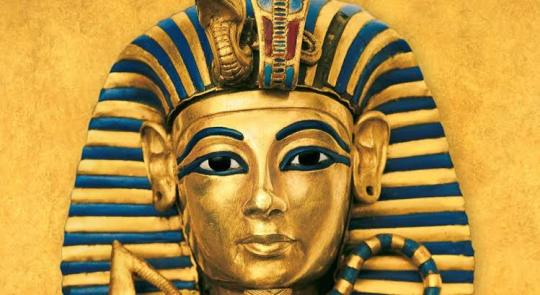
7.Few Egyptian men married their sisters
Some of Egypt’s kings married their sisters or half-sisters. These incestuous marriages ensured that the queen was trained in her duties from birth, and that she remained entirely loyal to her husband and their children. They provided appropriate husbands for princesses who might otherwise remain unwed, while restricting the number of potential claimants for the throne. They even provided a link with the gods, several of whom (like Isis and Osiris) enjoyed incestuous unions. However, brother-sister marriages were never compulsory, and some of Egypt’s most prominent queens – including Nefertiti – were of non-royal birth.Incestuous marriages were not common outside the royal family until the very end of the dynastic age. The restricted Egyptian kingship terminology (‘father’, ‘mother’, ‘brother’, ‘sister’, ‘son’ and ‘daughter’ being the only terms used), and the tendency to apply these words loosely so that ‘sister’ could with equal validity describe an actual sister, a wife or a lover, has led to a lot of confusion over this issue.

8.Not all pharaohs built pyramids
Almost all the pharaohs of the Old Kingdom (c2686–2125 BC) and Middle Kingdom (c2055–1650 BC) built pyramid-tombs in Egypt’s northern deserts. These highly conspicuous monuments linked the kings with the sun god Ra while replicating the mound of creation that emerged from the waters of chaos at the beginning of time.But by the start of the New Kingdom (c1550 BC) pyramid building was out of fashion. Kings would now build two entirely separate funerary monuments. Their mummies would be buried in hidden rock-cut tombs in the Valley of the Kings on the west bank of the Nile at the southern city of Thebes, while a highly visible memorial temple, situated on the border between the cultivated land (home of the living), and the sterile desert (home of the dead), would serve as the focus of the royal mortuary cult.Following the collapse of the New Kingdom, subsequent kings were buried in tombs in northern Egypt: some of their burials have never been discovered.

9. The Great Pyramid was not built by slaves
The classical historian Herodotus believed that the Great Pyramid had been built by 100,000 slaves. His image of men, women and children desperately toiling in the harshest of conditions has proved remarkably popular with modern film producers. It is, however, wrong.Archaeological evidence indicates that the Great Pyramid was in fact built by a workforce of 5,000 permanent, salaried employees and up to 20,000 temporary workers. These workers were free men, summoned under the corvée system of national service to put in a three- or four-month shift on the building site before returning home. They were housed in a temporary camp near the pyramid, where they received payment in the form of food, drink, medical attention and, for those who died on duty, burial in the nearby cemetery.

10.Cleopatra may not have been beautiful
Cleopatra VII, last queen of ancient Egypt, won the hearts of Julius Caesar and Mark Antony, two of Rome’s most important men. Surely, then, she must have been an outstanding beauty?Her coins suggest that this was probably not the case. All show her in profile with a prominent nose, pronounced chin and deep-set eyes. Of course, Cleopatra’s coins reflect the skills of their makers, and it is entirely possible that the queen did not want to appear too feminine on the tokens that represented her sovereignty within and outside Egypt.Unfortunately we have no eyewitness description of the queen. However the classical historian Plutarch – who never actually met Cleopatra – tells us that her charm lay in her demeanour, and in her beautiful voice
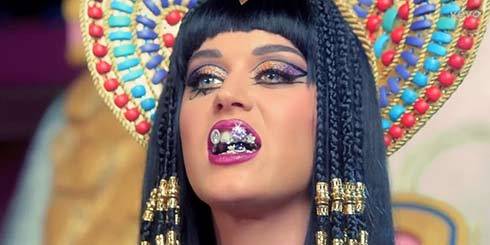
This article was first published on History Extra in January 2016.
1 note
·
View note
Text
Tomb of Ramesside-era royal scribe uncovered in Luxor
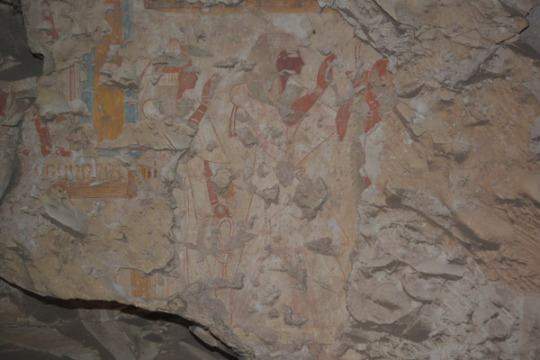
A Japanese mission from Waseda University discovered a private tomb in the Theban necropolis in Luxor, Mahmoud Afifi, the head of the antiquities ministry's Ancient Egypt Department, said on Tuesday.
Afifi says that the tomb, located at the El-Khokha area on the west bank of the Nile, is beautifully decorated and likely dates to the Ramesside period, based on its style. Early inspection of the tomb suggests that it belonged to a royal scribe named Khonsu .
Jiro Kondo, the head of the Japanese mission, told Ahram Online that the tomb was discovered while excavators were cleaning the area to the east of the forecourt of the tomb of Userhat, a high official under king Amenhotep III. Read more.
129 notes
·
View notes
Text
More Than Skin-Deep

Mirror of Ani
Ivory and Polished Bronze
1375-1300BC, 19th Dynasty, New Kingdom
British Museum, London.
It turns out that the Egyptians had mirrors just like you or me!
This comes from the tomb of Ani in Thebes. Ani was a scribe in the 19th dynasty. His tomb was non-royal, and the most common object from his tomb is the Papyrus of Ani, a copy of the book of the dead. The mirror would have been an expensive item, made from imported materials.
However, Ani was also buried with a mirror. The handle of the mirror is in the shape of the hieroglyph “Hem”, which means “servant”. The polished mirror’s shape could be a deliberate imitation of the shape of the sun. So, the message of the mirror would be understood that the handle is the servant to the sun disk that is mounted within the handle.
Mirrors were closely linked to resurrection in Ancient Egypt. The symbol of the sun carried connotations of rebirth due to the rising and setting of the sun. Additionally, the reflection of a mirror was a literal recreation of the viewer. This help powerful symbolic and magic significance. If the mirror could recreate the image of yourself, then it would be useful for recreating yourself in the next world. Many mirrors were discovered in tomb contexts, placed as close to the mummies as possible. All sorts of ritual mirrors were made especially for burial, and many of these were used only for death, and never in life.
The magic of this mirror is thus more than skin-deep.
Jacob Friedrich
(Thank you Trustees of the British Museum for granting me license to use this image)
1 note
·
View note
Photo

(via 3,000 Year-Old Tomb Of Royal Scribe Discovered In Egypt)
1 note
·
View note
Photo
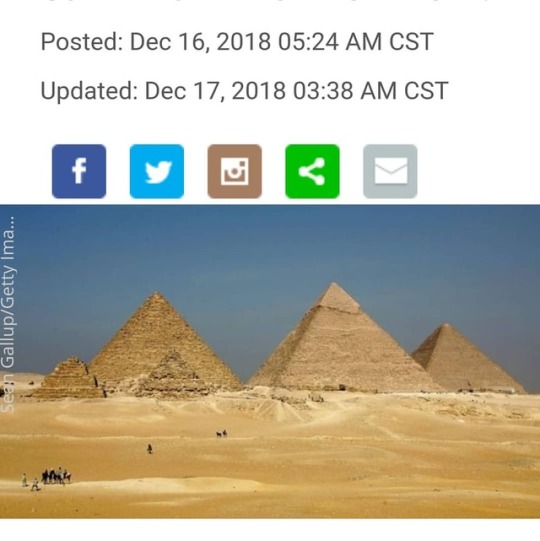
World News 4,400-year-old tomb discovered in Egypt World News 4,400-year-old tomb discovered in Egypt Unsealing tomb took weeks By: CNN'S MOHAMMED TAWFEEQ AND SHEENA JONES CONTRIBUTED TO THIS REPORT. Posted: Dec 16, 2018 05:24 AM CST Updated: Dec 17, 2018 03:38 AM CST Sean Gallup/Getty Images Related Content The best of ancient Egypt Eight mummies discovered in Egypt Dozens of cat mummies, rare beetles discovered in Egyptian tombs (CNN) - A more than 4,000-year-old private t #Tomb containing "exceptionally well-preserved" drawings has been discovered south of #Cairo according to Egypt's Ministry of Antiquities. Antiquities #MinisterKhaledAlAnani said the tomb had been discovered at the Saqqara archaeological site and was from the 5th dynasty of the pharaohs, which ruled roughly 4,400 years ago. The tomb belonged to a royal purification priest known as "Wahtye," al-Anani said in a statement. Inscriptions suggested the priest had served during the reign of King Nefer-Ir-Ka-Re and was the king's supervisor and inspector of the holy boat. Al-Anani said the tomb's walls were decorated with colored scenes depicting Wahtye with his mother, wife and family. The head of the excavation mission, Mostafa Waziri, said other drawings showed wine and pottery making, musical performances, sailing, hunting and the manufacture of funeral furniture. Waziri said his team had reached the tomb in November but that it had taken some time to enter as its doors were sealed. Some 50 niches inside the tomb also contained colored statues carved in rock, including of a person standing or in the scribe position, Waziri said. "This statue might belong to the deceased or a member of his family," he said. The general director of the site, Sabry Farag, said the tomb was about 10 meters (33 feet) long and 3 meters (10 feet) wide, with a basement. It also contained five burial shafts, Waziri said, which will be the subject of further excavations. In November, the #AntiquitiesMinistry announced that a mass cat cemetery and a collection of rare mummified scarab beetleswere among seven tombs discovered at #Saqqara Saqqara is also home to the famous Step Pyramid. #IAm_MsJohnson 💞 https://www.instagram.com/p/BrfAE4-BBfA/?utm_source=ig_tumblr_share&igshid=1rsyjjcnclcl8
0 notes
Photo


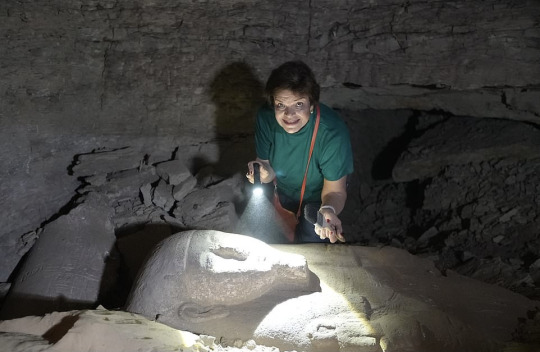
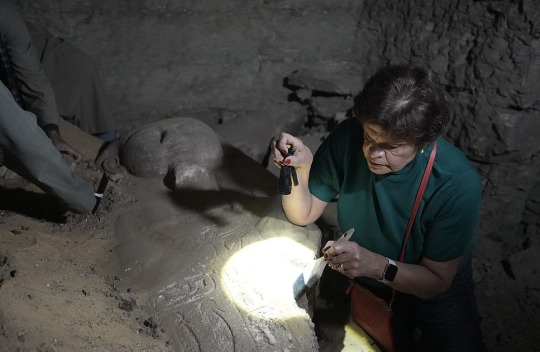
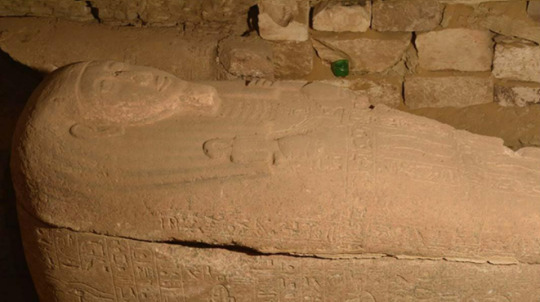

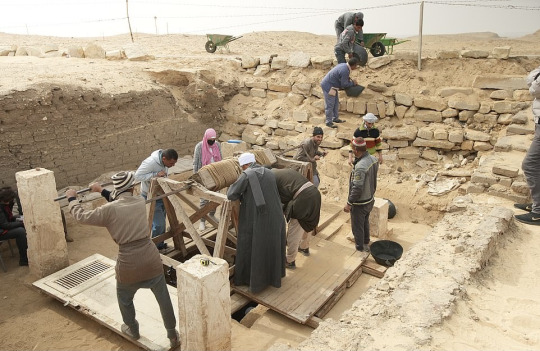

A 3,300-Year-Old Pink Granite Sarcophagus Unearthed in Egypt
The pink granite sarcophagus of a high-ranking Egyptian noble has been found in an ancient burial chamber near Cairo, where it has been lying for thousands of years.
It belonged to Ptah-em-wia, who served as head of the treasury under Ramses the Great, and has been described by archaeologists as a 'dream discovery'.
Inscribed on all sides with emblems, hiéroglyphs and titles, the up to 3,300-year-old stone coffin was found in pristine condition and in its original tomb 23 feet underground.
Professor Ola El Aguizy, who discovered the sarcophagus in Saqqara, hopes the finding will shed light on those who ruled Egypt after Tutankhamun.
The Cairo University archaeologist said: 'The hiéroglyphs on the sarcophagus certify that it is Ptah-em-wia and also the titles mentioned on the sarcophagus are the same as those found on the walls of the tomb itself.
'It only emphasises that he is a nobleman and quite close to the king, because his titles related to the temple of millions of years in Thebes prove that he had a very important role in the administration of that time.
'He could be equalled to the Minister of finance nowadays.'
Its surface-level tomb was discovered by Professor El Aguizy last season, but she was not able to descend into the underground chamber until this year.
The archaeologists had to move several tons of sand to create a shaft they could use to reach the first level of the tomb, which is located near the pyramid of King Unas.
There they found a 3,000-year-old stone masonry, which had to be reinforced before they could safely descend any further.
It had a small hollow in the floor hiding a second shaft, which the team descended by sitting in a large metal bucket that had to be winched up and down by hand.
This second underground level was the burial chamber, and was where the sarcophagus was lying.
Finding the coffin intact and in the tomb of its original owner are both rarities in Saqqara.
While it was found in good condition, a part of its lid was broken off and had been left in the corner of the room, according to the Egyptian Ministry of Tourism and Antiquities.
The archaeologists claim this was the result of tomb robbers breaking open and looting the casket.
Tomb robbers were active in the area in ancient times, and most tombs were then reused several times over so not many of the original owner's belongings would remain there.
However, Ptah-em-wia was the original builder of the tomb where his sarcophagus was found.
His coffin shows a record of all his titles, including Great Overseer of the Cattle and Royal Scribe.
He headed the treasury of Egyptian pharaoh King Ramses II in the era following the death of Tutankhamen.
#Egypt#Saqqara#A 3300-Year-Old Pink Granite Sarcophagus Unearthed in Egypt#Professor El Aguizy#Ptah-em-wia#Ramses the Great#archeology#archeolgst#ancient tomb#ancient grave#ancient artifacts#history#history news#ancient history#ancient culture#ancient civilizations#ancient egypt#egyptian history
30 notes
·
View notes
Text
The Daily Tulip
The Daily Tulip – Archeological News From Around The World
Friday 1st June 2018
Good Morning Gentle Reader…. The things I dig up for you…. And I love it!, it’s almost like being an archeologist as I scan the pages of Archeological sites to find things, not just anything, because there is a lot of “Stuff” but not important good “Stuff” and that’s what I’m always looking for.. and preferably, things older than me….recently I have had a swarm of items talking about the discovery of 50 year old items, now if I was a teenager or even 40 years old it would be of interest.. but I need old “Stuff” ……
INDUSTRIAL SITE EXCAVATED ON THE ISLE OF WIGHT…. ISLE OF WIGHT, ENGLAND—Volunteer diggers led by archaeologist Ruth Waller unearthed traces of chamber and bottle kiln floors at the site of the West Medina Mills, according to a report in the Isle of Wight County Press. In 1851, Charles Francis and Sons won the prize medal at the Great Exhibition for the Medina Cement created at the site, which is located near the River Medina on the Isle of Wight, off England’s southern coast. Portland cement was later made there. After 1944, the mill was used for cement storage and distribution.
3,500-YEAR-OLD INSCRIPTIONS DOCUMENTED IN EGYPT…. WARSAW, POLAND—According to a Science in Poland report, inscriptions on the rocks near the temple of Hathor at Gebelein, located in southern Egypt, have been documented and translated by researchers led by Wojciech Ejsmond of the University of Warsaw. Temples dedicated to Anubis and Sobek have also been located in the region. Many of the hieroglyphs, which were engraved into the rock, or engraved and then painted, are prayers that were written by scribes and, in some cases, signed. “We know Egyptian beliefs primarily from official texts from monumental temples and tombs, made for royals and elite members,” Ejsmond explained. These inscriptions, however, offer a glimpse into the popular religious beliefs of priests and pilgrims. The inscriptions have been difficult to see and study because the shape of the hill where they are located has changed over the years, putting the faded texts out of easy reach.
MOUND BUILDER LAND USE ANALYZED IN LOUISIANA…. URBANA-CHAMPAIGN, ILLINOIS—Fox News reports that Jayur Mehta of the University of Illinois and Elizabeth Chamberlain of Vanderbilt University examined Grand Caillou, a mound builder site in coastal Louisiana, through sediment coring, radiocarbon dating, optically stimulated luminescence dating, and analysis of ceramics in order to investigate how and why mound builders chose building locations. The study suggests the mound was built on a natural levee on a major lobe of the Mississippi River Delta that was a few feet higher than the surrounding landscape. Distinct layers, including clay placed at the bottom, looser sediments in the middle, and a clay cap placed on top of the mound increased its durability. Pottery at the site dates to between A.D. 1000 and 1400. The village, which supported about 500 people, had been established by about A.D. 1200. Ratios of carbon isotopes indicated saltwater incursion of the area could have led to the abandonment of the village by A.D. 1400. Many of Louisiana’s coastal mounds are now being lost to erosion.
ANCIENT KANGAROO FEAST FOUND IN AUSTRALIA…. PILBARA REGION, AUSTRALIA—According to an Australian Broadcasting Corporation report, a cave in northwestern Australia has yielded evidence of a campfire and kangaroo feast that may date back 20,000 years. Charcoal from the fire pit will be radiocarbon dated to confirm its age. Stone tools and flakes found near the charcoal may have been used to butcher the kangaroo. “We’ll have to have a look at them under the microscope, but they are the pieces that people were using at the site,” said Michael Slack of Scarp Archaeology. Traditional land owner Garren Smith said stories about the cave have been passed down through the generations. “It’s good that they are doing this and getting the records, having a look at how old things are,” he said.
NEOLITHIC SITE FOUND IN CYPRUS….THESSALONIKI, GREECE—According to a Cyprus Mail report, a team of researchers led by Nikolaos Efstratiou of Aristotle University of Thessaloniki has found a Neolithic site in the foothills of the Troodos Mountains, which are located in the center of the island of Cyprus. A hunter-gatherer site, found nearby, has been under excavation as well. The scientists are waiting for dating test results, but they think the region had long been in use by mobile groups of people, perhaps as a stop between the coast and the mountains, until they eventually built a permanent settlement in the Neolithic period.
SPANISH GALLEON WRECKAGE DISCOVERED OFF COAST OF COLOMBIA…. CAPE COD, MASSACHUSETTS—CBS News reports that the wreckage of San José has been discovered under 2,000 feet of water off the coast of Colombia by a team of researchers from the Woods Hole Oceanographic Institution (WHOI), Maritime Archaeology Consultants, Switzerland AG, and the Colombian government. The ship, a three-masted Spanish galleon carrying 62 guns and a cargo of ceramics, gold, silver, and emeralds, sank in 1708 during a battle with British ships that was part of the War of Spanish Succession. The ship was identified by its engraved bronze cannons, which were first spotted on the sea floor by research engineer Jeff Kaeli of WHOI using the REMUS 6000, a remotely operated vehicle carrying cameras and sensors. “I’m not a marine archaeologist, but ... I know what a cannon looks like,” he said. “So in that moment, I guess I was the only person in the world who knew we’d found the shipwreck.” The government of Colombia plans to build a museum and conservation lab to preserve and display San Jose’s artifacts.
30,000-YEAR-OLD MODERN HUMAN BONES FOUND IN SIBERIA…. IRKUTSK, RUSSIA—The Siberian Times reports that bones unearthed in eastern Siberia during road construction could represent the oldest modern humans outside Africa and the Middle East. Some of the recovered bones have been dated to about 50,000 years ago, and are undergoing tests to identify them, while others have been dated to about 30,000 years ago, and identified as Homo sapiens. Tools made of topaz and rock crystal, bone knives thought to have been used for hunting, an amulet made of a cave lion tooth, and other animal bones were also found at the site, which is located in the Tunkinskaya Valley. “The most important question now is when Homo sapiens appeared in Siberia, and the Tunka valley finds will allow scientists to shed light on it,” said researcher Mikhail Shunkov of the Russian Academy of Sciences.
Well Gentle Reader I hope you enjoyed our look at the archeological news from around the world this, Friday morning…
Our Tulips today are just like a painting, but I need a bigger cup for my coffee...

A Sincere Thank You for your company and Thank You for your likes and comments I love them and always try to reply, so please keep them coming, it's always good fun, As is my custom, I will go and get myself another mug of "Colombian" Coffee and wish you a safe Friday 1st June 2018 from my home on the southern coast of Spain, where the blue waters of the Alboran Sea washes the coast of Africa and Europe and the smell of the night blooming Jasmine and Honeysuckle fills the air…and a crazy old guy and his dog Bella go out for a walk at 4:00 am…on the streets of Estepona…
All good stuff....But remember it’s a dangerous world we live in
Be safe out there…
Robert McAngus
0 notes
Photo

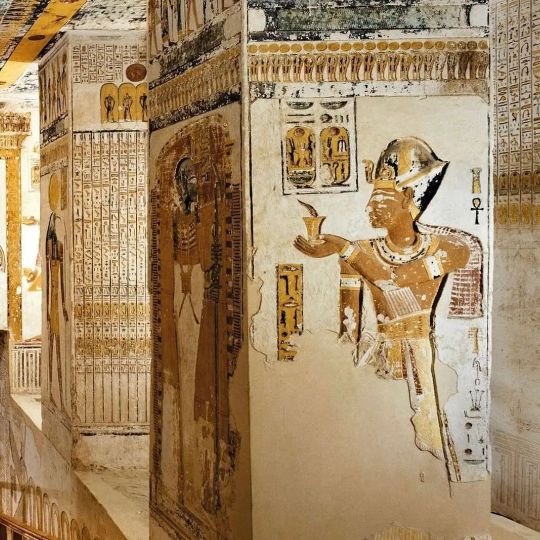

The Tomb of Ramessess VI
Ramesses VI Nebmaatre-Meryamun (sometimes written Ramses or Rameses, also known under his princely name of Amenherkhepshef C) was the fifth ruler of the Twentieth Dynasty of Egypt. He reigned for about eight years in the mid-to-late 12th century BC and was a son of Ramesses III and queen Iset Ta-Hemdjert. As a prince, he was known as Ramesses Amunherkhepeshef and held the titles of royal scribe and cavalry general. He was succeeded by his son, Ramesses VII Itamun, whom he had fathered with queen Nubkhesbed.
After the death of the ruling pharaoh, Ramesses V, who was the son of Ramesses VI's older brother, Ramesses IV, Ramesses VI ascended the throne. In the first two years after his coronation, Ramesses VI stopped frequent raids by Libyan or Egyptian marauders in Upper Egypt and buried his predecessor in what is now an unknown tomb of the Theban necropolis. Ramesses VI usurped KV9, a tomb in the Valley of the Kings planned by and for Ramesses V, and had it enlarged and redecorated for himself. The craftsmen's huts near the entrance of KV9 covered up the entrance to Tutankhamun's tomb, saving it from a wave of tomb robberies that occurred within 20 years of Ramesses VI's death. Ramesses VI may have planned and made six more tombs in the Valley of the Queens, none which are known today.
Egypt lost control of its last strongholds in Canaan around the time of Ramesses VI's reign. Though Egyptian occupation in Nubia continued, the loss of the Asiatic territories strained Egypt's weakening economy and increased prices. With construction projects increasingly hard to fund, Ramesses VI usurped the monuments of his forefathers by engraving his cartouches over theirs. Yet he boasted of having "[covered] all the land with great monuments in my name [...] built in honour of my fathers the gods". He was fond of cult statues of himself; more are known to portray him than any Twentieth-Dynasty king after Ramesses III. The Egyptologist Amin Amer characterises Ramesses VI as "a king who wished to pose as a great pharaoh in an age of unrest and decline".
The pharaoh's power waned in Upper Egypt during Ramesses VI's rule. Though his daughter Iset was named God's Wife of Amun, the high-priest of Amun, Ramessesnakht, turned Thebes into Egypt's religious capital and a second center of power on par with Pi-Ramesses in Lower Egypt, where the pharaoh resided. In spite of these developments, there is no evidence that Ramessesnakht's dynasty worked against royal interests, which suggests that the Ramesside kings may have approved of these evolutions. Ramesses VI died in his forties, in his eighth or ninth year of rule. His mummy lay untouched in his tomb for fewer than 20 years before pillagers damaged it. The body was moved to KV35 during the reign of Pinedjem I, and was discovered in 1898 by victor Loret.
#The Tomb of Ramessess VI#Twentieth Dynasty of Egypt#Valley of the Kings#pharaoh#ruler#history#history news#ancient historuy#ancient civilizations#ancient egypt#grave#ancient grave#art#artist#art work#afterlife#paintings#drawings#hieroglyphs#egyptian hieroglyphs
159 notes
·
View notes
Photo
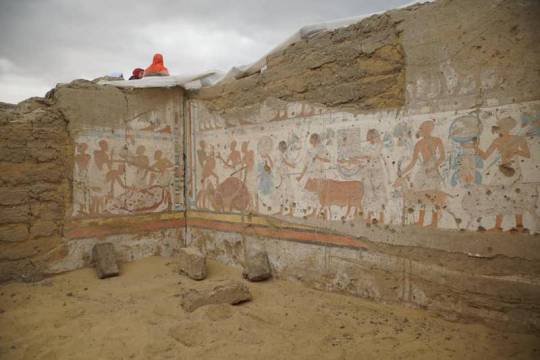

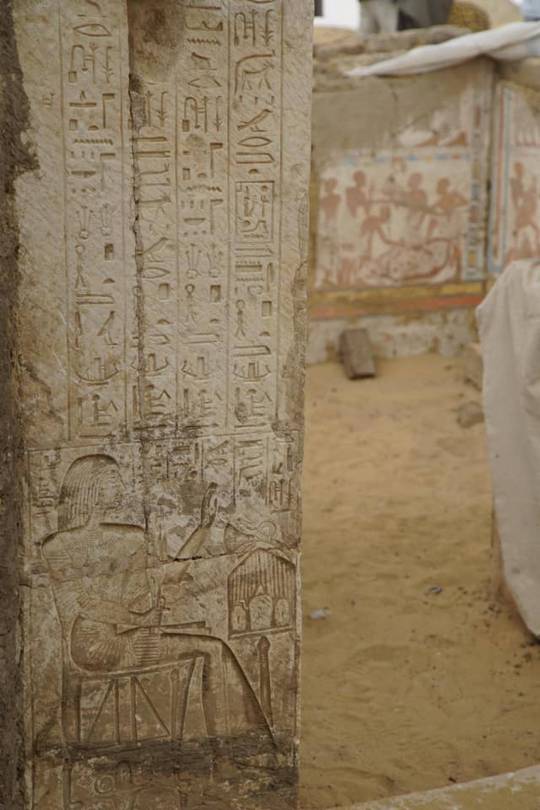
Egypt Finds Tomb of Ramses II's Royal Treasurer Ptah-M-Wiah at Saqqara Necropolis
The discovery was made by the Cairo University archaeological mission, which has been excavating the complex for more than a century
Archaeologists working in the Saqqara necropolis, in Giza governorate, have announced a major new discovery at the ancient tomb complex.
A Cairo University mission unearthed the tomb of Ptah-M-Wiah, a high-ranking ancient Egyptian official and head of the treasury during the reign of King Ramses II.
Ramses II ruled from 1279 BC to 1213 BC.
“What makes this tomb unique is the area it was found in,” said Dr Ola El Aguizy, who led the archaeological mission that discovered the tomb.
“A number of very important military leaders, statesmen and aristocrats were buried there, most of whom date back to the reign of Ramses II,” she told The National.
Dr El Aguizy adding that Horemheb, the famed military leader who became pharaoh and ushered in the 19th dynasty of ancient Egypt – from 1292 BC to 1189 BC – was found buried nearby.
The dig was overseen by the secretary general of Egypt’s Supreme Council of Antiquities, Dr Mostafa Waziri.
He said that the discovery of Ptah-M-Wiah’s tomb is particularly significant because of the high position he held in Ramses II’s Cabinet.
Alongside being the royal treasurer, he also served as royal scribe, chief supervisor of livestock and the government’s main administrator of divine offerings at Rameses II’s temple in Thebes, modern-day Luxor.
Dr El Aguizy also highlighted Ptah-M-Wiah’s prestigious roles.
“We know through the inscriptions that he headed the entire kingdom's livestock, which is a very distinguished role,” she said.
“Additionally, he oversaw all the ritual sacrifices at the temples in Thebes, which was the religious centre of the kingdom at the time.
“So his influence was present in both the upper and lower kingdoms, which is no small feat,” Dr El Aguizy said.
Teams of researchers from Cairo University have been excavating ancient Egypt's treasures for more than a century. Their latest discovery fitted in well with the grandeur of previous discoveries in the area.
“The tomb itself is much like others we have found in the area before, most of which date back to the Ramesside era of the New Kingdom,” said Dr El Aguizy.
The Ramesside period – which spanned the 19th and 20th dynasties, between 1292 BC and 1075 BC – is renowned for its prosperity, as shown by the grandeur of its archaeological treasures.
Ptah M Wiah's tomb, like most other Ramesside-era tombs, is made up of a grand entrance adorned with an edifice depicting scenes from its occupant's life, and features two inner chambers.
The first chamber was usually left bare, while the second chamber would be much more ornate, featuring decorative columns flanking the entombed mummy.
The columns, known as Osirian columns after the god Osiris, are meant to connect the earth to the sky, bridging the world of the living with the afterlife, Dr El Aguizy said.
“Osirian columns are a symbol. The ancient Egyptians believed that they would grow to reach the heavens, and through this, Ra, the god of the heavens, would make contact with Osiris, the god of the underworld, and their realms would be connected,” she said.
Also found in Ptah-M-Wiah's tomb were a number of stone blocks, which Dr El Aguizy said were once part of the ceiling and walls of the tomb, but had fallen down over the centuries.
This kind of wear and tear is typical of other tombs found in the area, she said.
On one of the walls left standing is a large painting depicting a procession of people carrying offerings which ends with a scene of a calf being slaughtered.
“We found scenes of the afterlife that were really striking – the style of Ramesside tombs is really intricate and quite beautiful,” Dr El Aguizy said.
The artefacts will be catalogued and then placed back in the tomb, in their original positions, so they can be seen by visitors when it opens to tourists, Dr Waziri said.
By Kamal Tabikha.
#Egypt Finds Tomb of Ramses II's Royal Treasurer Ptah-M-Wiah at Saqqara Necropolis#archeology#tomb#grave#history#history news#ancient civilizations#ancient tomb#ancient egypt#pharaoh#royal
31 notes
·
View notes